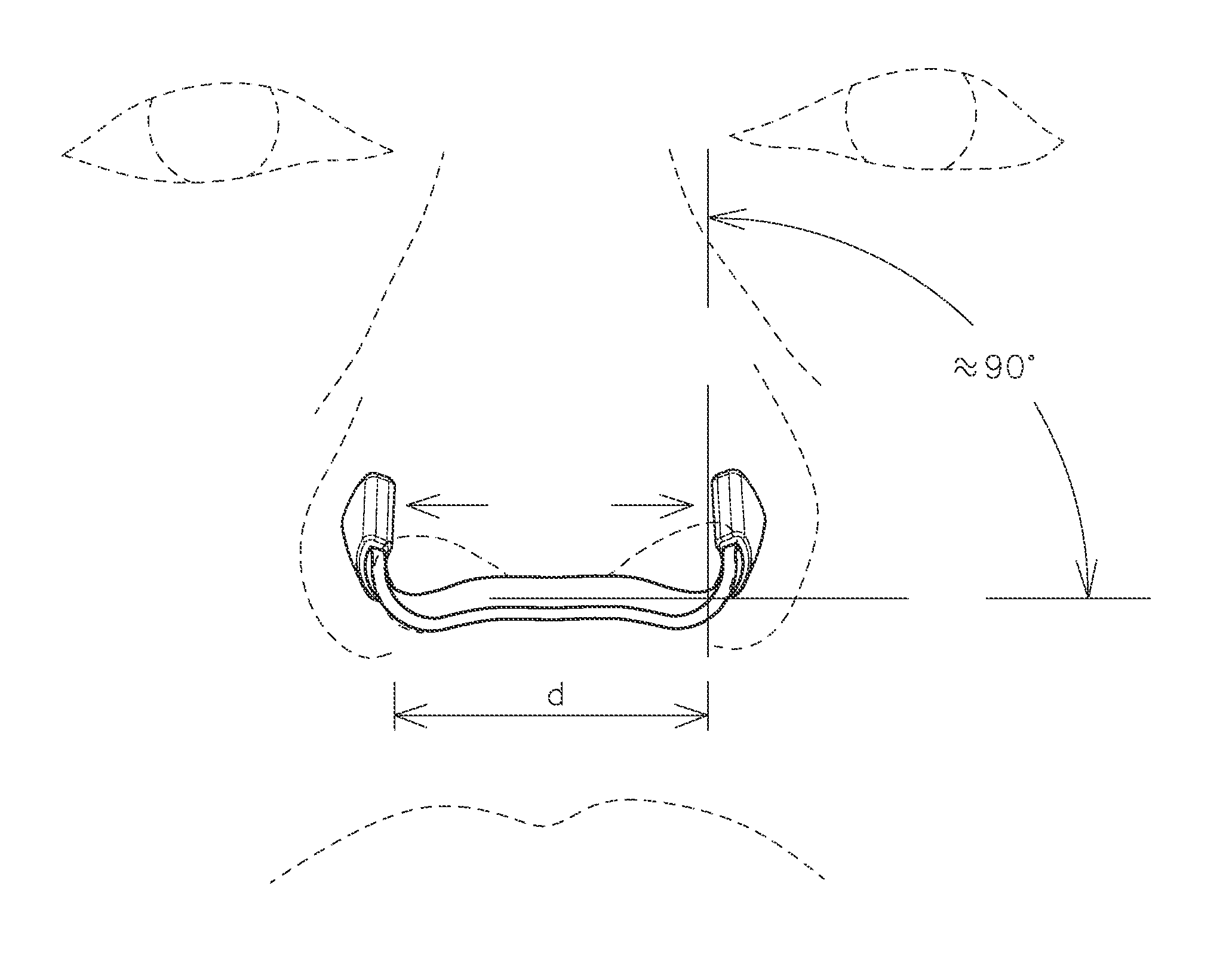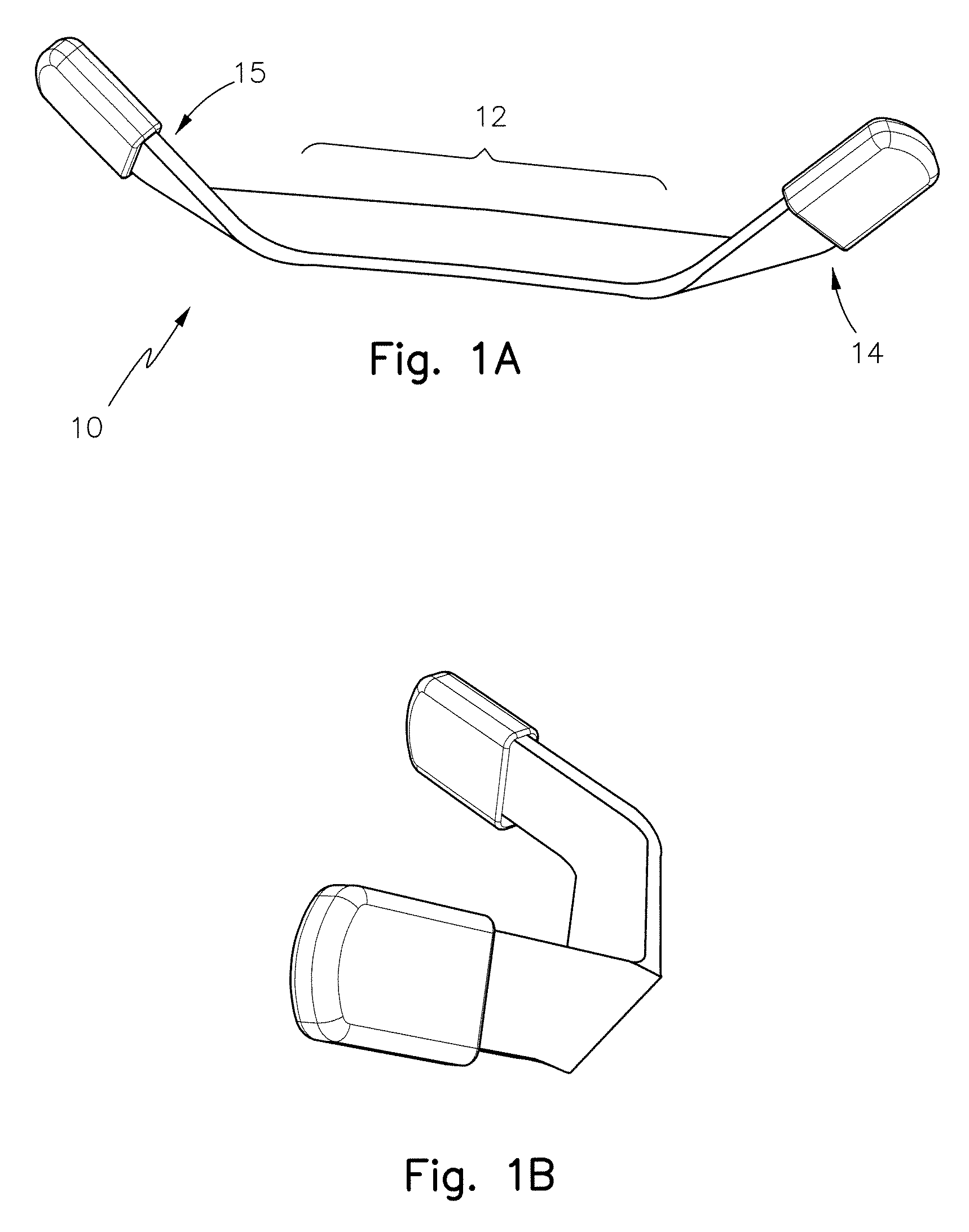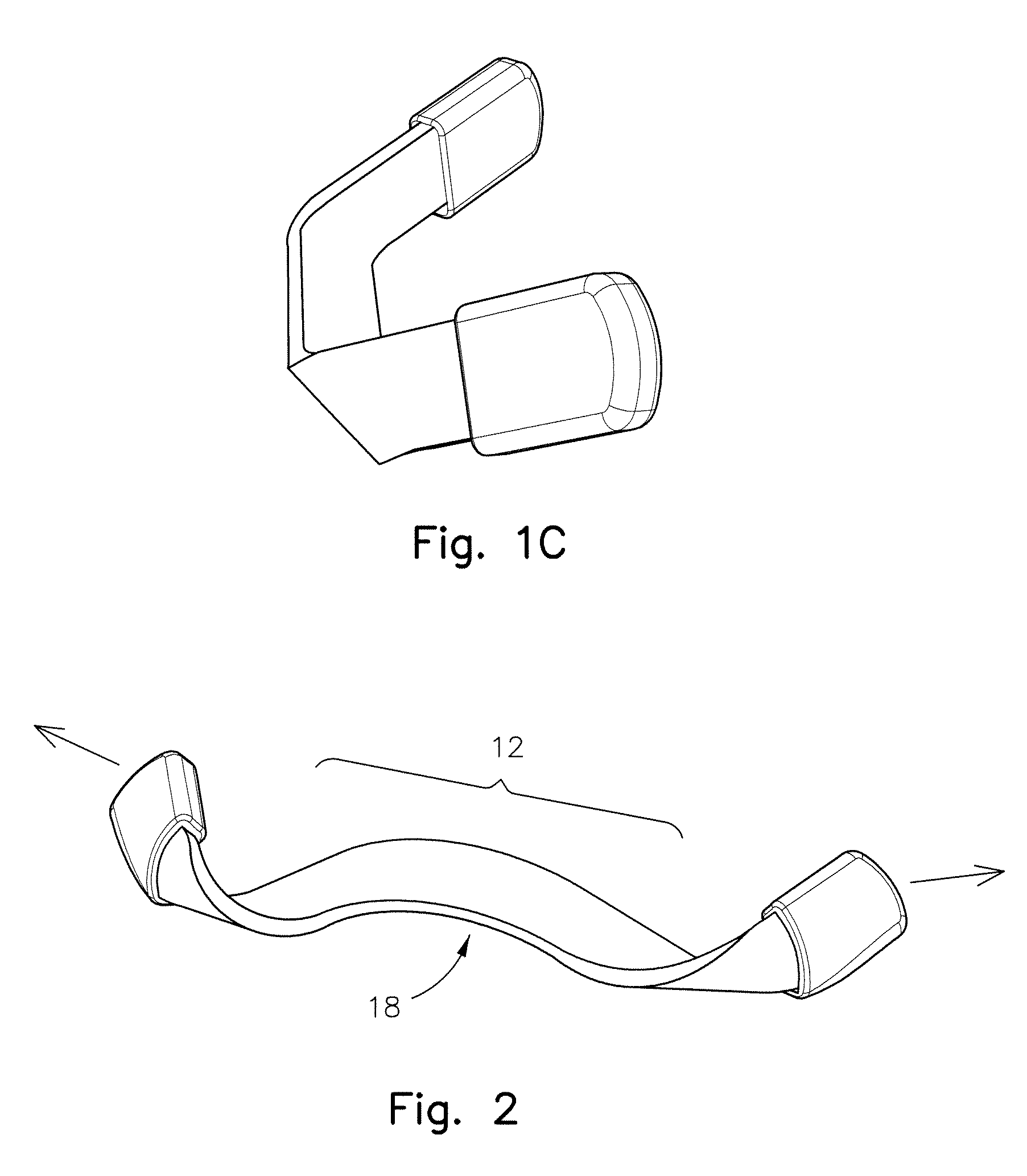Nostril dilator
a dilator and nose tube technology, applied in the field of devices, can solve the problems of lack of user modulation, lack of constant pressure of thorner and slater patents, limited amount of external devices, etc., to reduce the physical constriction of the airway, reduce the risk of snoring, and improve the nasal breathing efficiency
- Summary
- Abstract
- Description
- Claims
- Application Information
AI Technical Summary
Benefits of technology
Problems solved by technology
Method used
Image
Examples
Embodiment Construction
[0026]The reference numerals assigned to the various elements of the internal nasal prosthesis of this invention have the same numerical value where the elements in each Figure is the same or perform a function in common.
[0027]FIG. 1(a) depicts a preferred embodiment of the nasal prosthesis (10) of this invention having a medial segment (12) and two appendages (14, 15) on each end thereof. Each appendage (14, 15) is the formed so as to comprise the mirror image of the other. In the embodiment of the invention depicted in FIG. 1, the medial segment (12) is flat ribbon between each appendage (14, 15). As depicted in FIG. 1a, the appendages (14, 15) are inclined at an angle of at least about 30 degrees into the plane of the page, and at about 90 degrees from the horizontal. The relative orientation of each appendage to the medial segments is more fully appreciated when the prosthesis is view from the left end thereof (FIG. 1b) and from the right end thereof (FIG. 1c).
[0028]FIG. 2 depic...
PUM
 Login to View More
Login to View More Abstract
Description
Claims
Application Information
 Login to View More
Login to View More - R&D
- Intellectual Property
- Life Sciences
- Materials
- Tech Scout
- Unparalleled Data Quality
- Higher Quality Content
- 60% Fewer Hallucinations
Browse by: Latest US Patents, China's latest patents, Technical Efficacy Thesaurus, Application Domain, Technology Topic, Popular Technical Reports.
© 2025 PatSnap. All rights reserved.Legal|Privacy policy|Modern Slavery Act Transparency Statement|Sitemap|About US| Contact US: help@patsnap.com



